
There are good & bad times to visit Tokyo Disneyland & DisneySea in 2025. Some days have low crowds, while others have 45 minute wait times just for popcorn! Extremes in weather and seasonal entertainment are other important factors to consider when planning your Japan trip. (Updated January 5, 2025.)
In our latest update to this guide to the best times to visit Tokyo Disney Resort, we’re looking forward to 2025. This follows quite a bit of news and changes, including the opening of Fantasy Springs last summer. That blockbuster new $2 billion expansion is the eighth themed port of call at Tokyo DisneySea, and has had a huge impact on attendance patterns and crowds.
Fantasy Springs is a huge addition that is drawing guests from around the globe. It put Tokyo Disney Resort on the radar of many more Americans and other foreign travelers. However, it is far from the only factor for shifting attendance and crowd trends at TDR. To the contrary, it’s not even the biggest factor.
This may come as a surprise, but in combing through quarterly financial reports from Oriental Land Company (OLC), the owner and operator of Tokyo Disney Resort, there have actually been two bigger factors. The first is severe heat, which has drastically reduced attendance in the summer. This is especially true among domestic travelers within Japan and repeat visitors. This is such an issue for OLC that they’re exploring weather countermeasures, including the installation of more air-conditioners, shade structures, beverage vending machines, and extended summer programming.
The second is a sharper than anticipated decline in travel demand on the back of a slowdown in post-pandemic “revenge spending.” This is hardly surprising, as Walt Disney World and Disneyland have seen this exact scenario play out in the U.S. parks. The only difference is the timeline being delayed due to Japan’s slower and more cautious approach to reopening.
The extent to whether pent-up demand continues to exhaust itself (or doesn’t) among the Japanese is the biggest variable on 2025 crowd levels at Tokyo Disney Resort. Despite the existence of English-language sites like this one, Japanese visitors make up the vast majority of visitors to TDR in normal years. International visitors only accounted for 13% of all guests at Tokyo Disney Resort last year, which was a new record high. While that was the fastest-growing demographic, it was still a small percentage of all park attendees.


For what it’s worth, OLC currently is forecasting annual attendance of 28 million for the 2025 fiscal year, revised down from an initial forecast of 29 million. This is up from approximately 27.5 million in the last fiscal year, which is not much of an increase considering that Fantasy Springs opened in the current fiscal year. (In fairness, Tokyo Disneyland’s 40th Anniversary was a huge attendance driver in the prior fiscal year.)
With that said, not all timeframes have been impacted equally. For starters, there was a lull in the lead-up to Fantasy Springs as locals and tourists alike postponed visits until the new port-of-call opened. This made for a slower few months pre-Fantasy Springs, as compared to the prior year. That wasn’t much of a surprise to OLC, per its quarterly reports.
As noted, last summer was slower than expected due to extreme heat despite the opening of Fantasy Springs. We question whether this is entirely due to the severe weather–Tokyo has had some really hot summers in the last ~5 years, and it stands to reason all would’ve been (more or less) equally impacted. We strongly suspect guests also stayed away in the opening months of Fantasy Springs, fearing colossal crowds.


Instead, that heavy attendance showed up in the fall during the Halloween and Christmas seasons. We also strongly suspect price sensitivity was a contributing factor, as we anecdotally experienced heavier congestion and higher wait times on dates when tickets were cheaper last year. (For what it’s worth, we “strongly suspect” these things thanks to years of experience with Walt Disney World and Disneyland, which have seen the exact same dynamics.)
To that point, we had an awful experience attempting to enter Fantasy Springs during the holiday season, which almost soured the day in Tokyo DisneySea for us. You can read Why Disney’s #1 Park is Getting 1-Star Reviews for a full recap, but suffice to say, we are far from alone in having these issues. This came after pretty smooth and seamless experiences with Fantasy Springs during the (slower) summer season.
Looking forward, it seems like a very safe bet that attendance numbers through May 2025 will be higher than they were this year. This is in part because last year’s numbers were artificially low in the lead-up to Fantasy Springs due to the aforementioned postponed visits (making for an easy comparison), and because of the flip side of that: locals are returning now to experience Fantasy Springs.


One final, less significant wild card is that park capacity is still below 2019 levels. We experienced this first hand with our last trip to Tokyo Disney Resort. The parks were packed with some of the worst ‘feels like’ crowds we’ve ever encountered.
Staffing shortages are an ongoing issue, restaurants and retail remain closed, entertainment is reduced or modified, hours are shorter, and more. All of these things are individually minor, but are a big issue in aggregate. The bottom line is that the Tokyo Disney Resort of today is still very different from the Tokyo Disney Resort of 2019. (Again, a very similar dynamic to the U.S. parks in 2021 and 2022.)
Our sincere hope is that this capacity is restored in short order, as it will be needed if attendance continues to increase. Tokyo Disney Resort has already announced the return of a show to the Hangar Stage in Tokyo DisneySea with “Dreams Take Flight” debuting on July 16, 2025. Additionally, the scaled-back Big Band Beat: A Special Treat will end on September 30, 2025…and hopefully something will replace it before the end of the year.
This is a step in the right direction, but it’s just a start. More is about 2 years overdue–it seems almost like OLC is asleep at the wheel to just be addressing these issues in mid-2025.
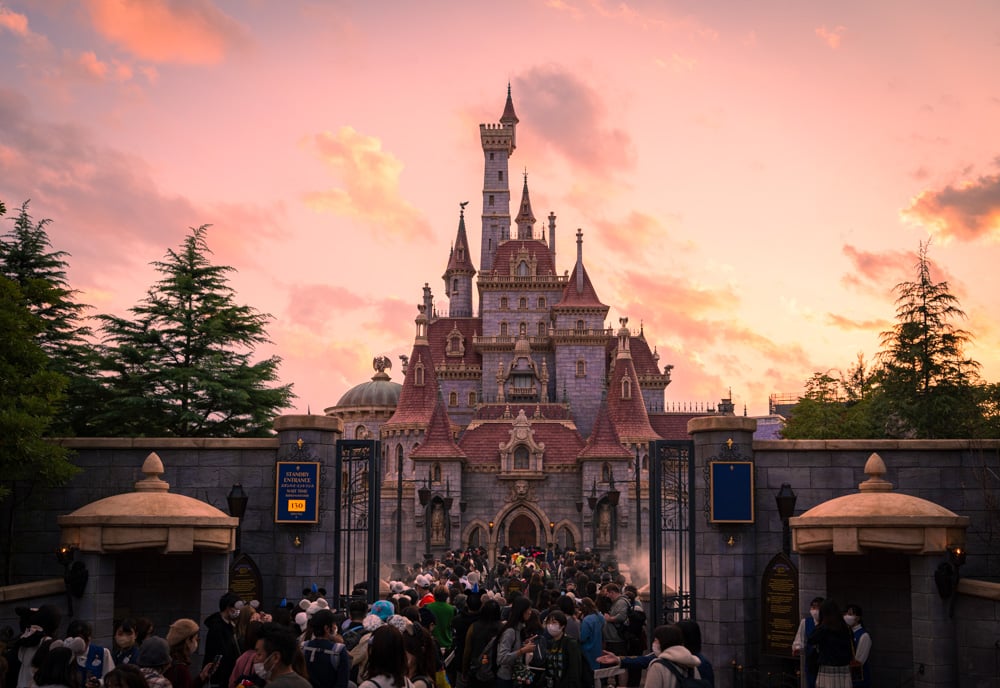

With that rather significant preface out of the way, we’ll do our best to predict crowd trends here based on past precedent in a normal year. All things being equal, these general patterns should repeat themselves again in 2025 and beyond.
Narrowing things down to the season during which you want to visit is a crucial first step from our perspective. This isn’t California or even Florida. The differences between January and April, for example, are significant. In January, you will certainly find cold weather and might even be greeted by snow in different parts of Japan, including Tokyo Disneyland. In April, weather is mild, the cherry blossoms start blooming, and the parks are celebrating spring.
To that end, let’s start by taking a month-by-month look at what you can encounter in terms of seasonal offerings, crowds, and weather. Let’s start with the special events, which are shaping up to be different in 2025 than previous years…


2025 Special Events at Tokyo Disney Resort
- Disney Pal-Palooza: Vanellope’s Sweet Pop World (Tokyo Disneyland) – January 15 to March 16, 2025
- Duffy & Friends 20th Anniversary (Tokyo DisneySea) – April 8, 2025 to March 19, 2026
- Disney Pal-Palooza: Donald’s Quacky Duck City (Tokyo Disneyland) – April 8 to June 30, 2025
- Food & Wine Festival (Tokyo DisneySea) – April 8 to June 30, 2025
- Summer Programs (Both Parks) – July 2 to September 15, 2025
- Halloween (Both Parks) – September 17 – October 31, 2025
- Christmas (Both Parks) – November 11 – December 25, 2025
As compared to a normal (2019 and earlier) year, this lineup of 2025 special events is still rather meager. There’s no winter event at Tokyo DisneySea and no Easter at either park. While the Disney Pal-Palooza has been a nice addition in the last two years, some of the other offerings may be substantively lacking.
We’re both surprised and unsurprised by this. As compared to the last few years, this is a marked increase. There’s also the practical reality that Tokyo Disney Resort is way behind the curve in resuming operations, getting back to normal almost 2 years behind the U.S. parks. That has meant health safety protocol and constraints, both onstage and off, as well as staffing shortages.
That’s not to excuse this lineup or what’s been offered the last few years. The slow pace of getting back to normal is consistent with Japan as a whole, but it’s also an easy pretense for cost-cutting. It’s also to be expected that entertainment would be reduced as capital investments (new rides and lands) increases; that’s the Disney playbook.


Here’s a rundown of what to expect each month. Note that these are normal trends with past special events preserved for posterity so you can see what would typically be offered:
January
- Seasonal Event: New Year’s at Both Parks
- Seasonal Event: Minnie Bestie Bash at Tokyo Disneyland
- Seasonal Event: Duffy’s Heartwarming Days at Tokyo DisneySea
- Weather: 35-50° F with mostly sunny days and little precipitation.
- Crowds: Low after New Year’s week.
February
- Seasonal Event: Minnie Bestie Bash at Tokyo Disneyland
- Seasonal Event: Duffy’s Heartwarming Days at Tokyo DisneySea
- Weather: 35-50° F with mostly sunny days and little precipitation.
- Crowds: Low to moderate, increasing towards the end of the month.
March
- Special Event: Minnie Bestie Bash at Tokyo Disneyland
- Seasonal Event: Duffy’s Heartwarming Days at Tokyo DisneySea
- Seasonal Event: Disney’s Easter at Both Parks
- Weather: 40-55° F with mostly sunny days and light precipitation.
- Crowds: Moderate crowds the entire month getting worse towards the end of the month, both in Tokyo Disneyland and Japan in general (blossom season).
April
- Seasonal Event: Disney’s Easter at Both Parks
- Weather: 50-65° F with moderate sunny days and light precipitation
- Crowds: Low outside of potential holidays at the end of the month (avoid days around Golden Week).
May
- Seasonal Event: Disney’s Easter at Both Parks
- Weather: 60-75° F with moderate sunny days and light precipitation.
- Crowds: Low after Golden Week travel concludes.
June
- Special Event: Duffy Sunny Fun at Tokyo DisneySea
- Seasonal Event: Disney’s Easter at Both Parks
- Weather: 65-75° F with some sunny days and moderate precipitation.
- Crowds: Normally low.
July
- Seasonal Event: Duffy Sunny Fun & Pirates Summer in Tokyo DisneySea
- Weather: 75-85° F with some sunny days, some precipitation, and high humidity.
- Crowds: Moderate until the last week, which is heavy.
August
- Seasonal Event: Duffy Sunny Fun & Pirates Summer in Tokyo DisneySea
- Weather: 75-90° F with moderate sunny days, light precipitation, and high humidity.
- Crowds: Heavy.
September
- Special Event: Halloween in both parks
- Weather: 70-80° F with moderate sunny days and some precipitation.
- Crowds: Low at the beginning of the month, increasing to heavy at the end.
October
- Special Event: Halloween in both parks
- Weather: 60-70° F with moderate sunny days and light precipitation.
- Crowds: Heavy.
November
- Special Event: Christmas in both parks
- Weather: 50-65° F with mostly sunny days and light precipitation.
- Crowds: Moderate.
December
- Special Event: Christmas in both parks
- Weather: 40-55° F with mostly sunny days and light precipitation.
- Crowds: Low until Christmas week; heavy thereafter.


Note that this month by month look is a high level overview, and makes generalizations about crowds and weather. For exact dates of Tokyo Disney Resort seasonal events, consult their official monthly calendar.
In addition to the events on this calendar and that official one, Tokyo Disneyland has opened its massive expansion that includes the new Enchanted Tale of Beauty and the Beast attraction and the indoor Fantasyland Forest Theatre. In Toontown, the new Disney Character greeting facility Minnie’s Style Studio is also open, and the Happy Ride with Baymax has debuted in Tomorrowland.


In terms of weather, it gets cold in the winter and then increasingly warmer until peaking during the spring months. Late-June through early-August are the worst times to visit from a weather perspective terms of both precipitation and debilitating humidity.
Pre-closure, we visited during several times of year. Most noteworthy for the purposes of this post were our summer visits. While we enjoyed the summer festivities, the weather bordered on miserable. Japan’s sweltering temperatures made world news due to temperatures over 100F and a record-breaking heat wave that has killed dozens. Temperatures this intense are becoming increasingly common in Japan, and that’s something to consider when planning.
We would strongly recommend avoiding the summer months of mid-June through late August. May through early June are generally “safe” and can be great times to visit (a sweet spot with pleasant-enough weather and lower crowds), but do dates deeper into the summer season. The lower crowds aren’t worth it–take heavier crowds but better weather!
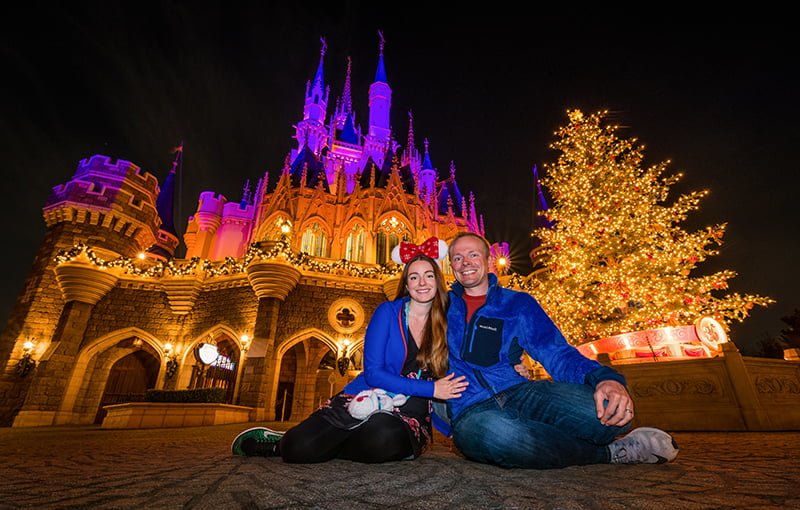

Around September, the weather starts to cool again in the fall leading to colder weather again in the winter. From September through November, things are generally pleasant. December through February are once again “weather wild cards” with freezing temperatures and even snow possible. If you’re averse to cold weather, you should avoid these months.
Weather once again becomes more temperate in the spring, with April and May being quite nice. Our calendar above covers in-park crowds, and indicates that April is generally low season for Tokyo Disney Resort. Note that April is cherry blossom season in Japan, so you are likely to encounter heavier crowds outside the parks during peak sakura times. (Ditto that with mid to late November and fall colors season.)
As for crowds, you definitely want to consult something more precise than our overview. Japanese national holidays and to a lesser extent national holidays in China and South Korea (the largest demographics of overseas visitors to Japan) can have impact crowds on certain dates, and crowds can turn on a dime from being light to heavy when school is out of session.
For a bit more precision, we recommend consulting Crowd Calendars for Tokyo Disneyland and DisneySea. These are incredibly great resources for choosing which days to visit the parks once you’ve narrowed down your rough travel dates based upon the season or special events you want to experience. There’s a lot of info in the crowd calendars, and they have never steered us wrong.


One thing to note is that crowds fluctuate more at Tokyo Disneyland and DisneySea more than any other parks in the world. We’ve been on “low” days in the middle of the weeks that are lighter than mid-January at Disneyland, and we’ve been on weekends that feel like New Year’s Eve in Magic Kingdom.
A lot of people of apprehensive about visiting Tokyo Disneyland due to photos that circulate of humongous lines to get into the park and crazy congestion, and while the former is true every day (the Japanese like to show up early!) the latter is only true on the busiest days of the year. I want to underscore this because the perception of crowds in these parks has taken on a life of its own and is, frankly, overblown.
With that said, it is very important to choose your travel dates wisely to avoid weekends and holidays, otherwise you risk being caught in one of these ‘crazy congestion’ times. Our 3 favorite times to visit the parks are mid-May, early to mid-September, and early-November.
If you go in mid-May, you avoid the the Golden Week crowds, get better weather than earlier in the year, and will be able to see Disney’s Easter, which is awesome. In our experience, this is the sweet spot in terms of weather, crowds, and seasonal events.
If you visit in early to mid-September, you’ll be able again have milder weather and you will beat the Halloween crowds (which get bad!) while still being able to enjoy the Halloween festivities.
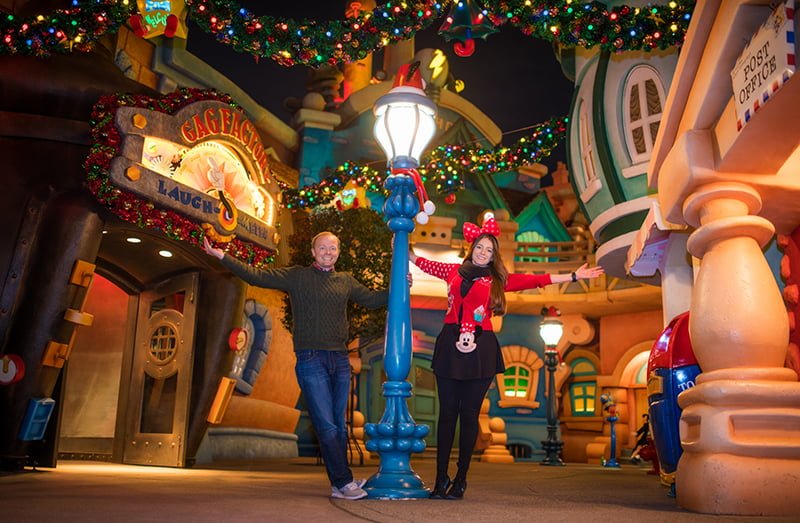

We’ve dubbed going for the last two days of Halloween and the first week of Christmas as “HalloXmas at Tokyo Disney Resort.” This is our absolute favorite time of the year to go thanks to seasonal offerings. Note that Halloween itself is bad crowd-wise, but the following days are light. Weather should be temperate throughout the trip, but you might need a light jacket.
We love Tokyo Disney Resort, but we think it would be sort of extreme (and not EXTREME! in a good way, like chugging a bunch of Mountain Dew and hanging out with Chuck Norris) to visit Japan without seeing other parts of Japan, so you should definitely consult a calendar of happenings around the country before finalizing your dates.
As noted above, cherry blossom and fall colors seasons are going to be busy throughout the country. This is particularly true in Kyoto, Mt. Fuji, and other areas known for seasonal beauty. If you’re just visiting only Tokyo on your first trip to Japan, this shouldn’t be as much of a concern.
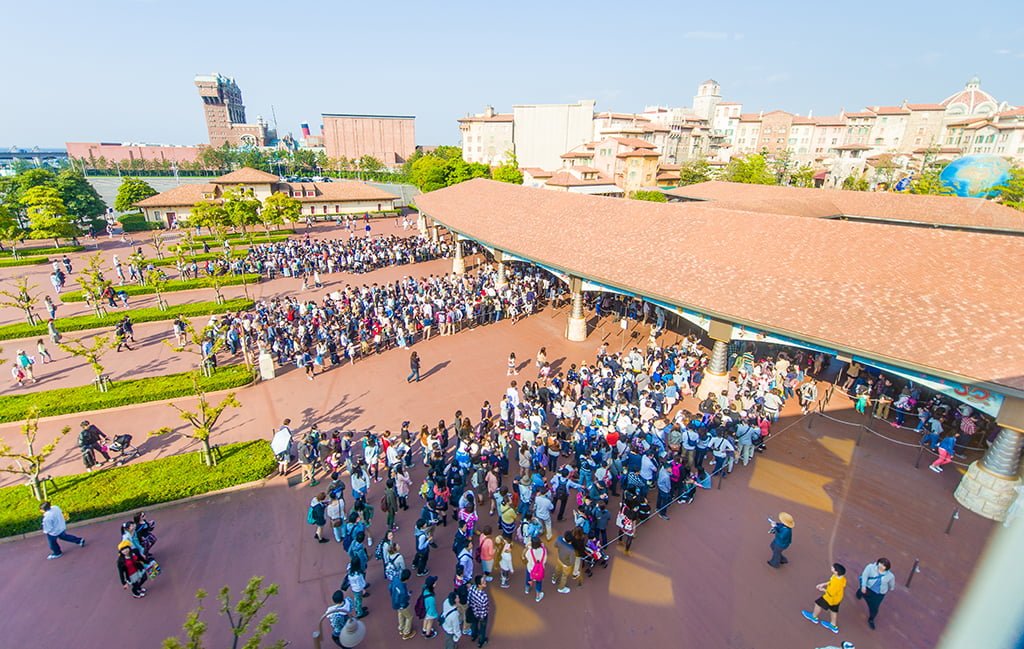

Once you’ve determined what time of year you want to visit, it’s important to plan the particular days you will be visiting. The most important takeaway you can glean from this article is do not visit Tokyo Disneyland or DisneySea on weekends. That’s really important, so let me reiterate with some dramatic emphasis: DO NOT VISIT TOKYO DISNEY RESORT ON WEEKENDS!!!
This is true no matter what time of year you visit, even during the lowest seasons, weekend crowds are bad. Like Times Square on New Year’s Eve (minus the B.O. and vomit) bad. This is because Tokyo Disneyland and DisneySea are locals parks more than even Disneyland in California, meaning they get crowded with Annual Passholders on the weekends when they are off school and work.
Saturday is the absolute worst day of the week, with Sunday a close second (until around 5 p.m. when locals start heading home). Friday is the third worst day, especially in the afternoon and evening, as people head to the parks to kick off their weekends.
In terms of the rest of the week, we can’t really say we’ve noticed a significant difference among Monday, Tuesday, Wednesday, or Thursday, save for Monday arguably being slightly busier with a few locals doing long weekends and tourists kicking off the start of their vacation head to the parks. This difference is negligible at best, and we would not recommend avoiding Monday as a result.
The above is not currently accurate due to date-based pricing that has higher prices on weekends and, more importantly, due to the ongoing suspension of Annual Passes. Holiday weekends are still busier, but we now purposefully visit on Sundays because we’ve found they tend to be slower than most days of the week (Sunday nights are especially nice).


One final thing to consider is the strength of the yen as compared to the dollar. The yen is hovering around its weakest levels since 1998, with the Japanese currency falling about 25% in the last couple of years. The strength of the dollar means greater purchasing power when traveling abroad, and to Japan in particular.
The Bank of Japan has intervened by selling dollar-denominated assets to buy the yen in an effort to prop-up the Japanese currency’s free-fall, but that hasn’t done much. The Bank of Japan has reaffirmed a commitment to ultralow monetary policy, whereas the U.S. Federal Reserve and other central banks in the West have hiked interest rates repeatedly–and have signaled intent to continue doing so.
These divergent approaches will mean the effects of the yen intervention might be limited, unless the BOJ changes its dovish stance. Consult conversion charts while planning your trip to Tokyo Disney Resort to see where things stand prior to your visit, but you should have more purchasing power when it comes to airfare, hotels, park tickets, and outfits for your Duffy plush–you know, all of the essentials.
Planning a trip to Tokyo Disney Resort? For comprehensive advice, the best place to start is our Tokyo Disneyland & DisneySea Trip Planning Guide! For more specifics, our TDR Hotel Rankings & Reviews page covers accommodations. Our Restaurant Reviews detail where to dine & snack. To save money on tickets or determine which type to buy, read our Tips for Saving Money post. Our What to Pack for Disney post takes a unique look at clever items to take. Venturing elsewhere in Japan? Consult our Ultimate Guide to Kyoto, Japan and City Guide to Tokyo, Japan.
Your Thoughts
If you’ve been to Tokyo Disneyland or Tokyo DisneySea, what did you think were the best or worst times to visit? Thinking about visiting at any particular times of year? Other thoughts on avoiding crowds at Tokyo Disneyland? Share your thoughts or questions in the comments below!

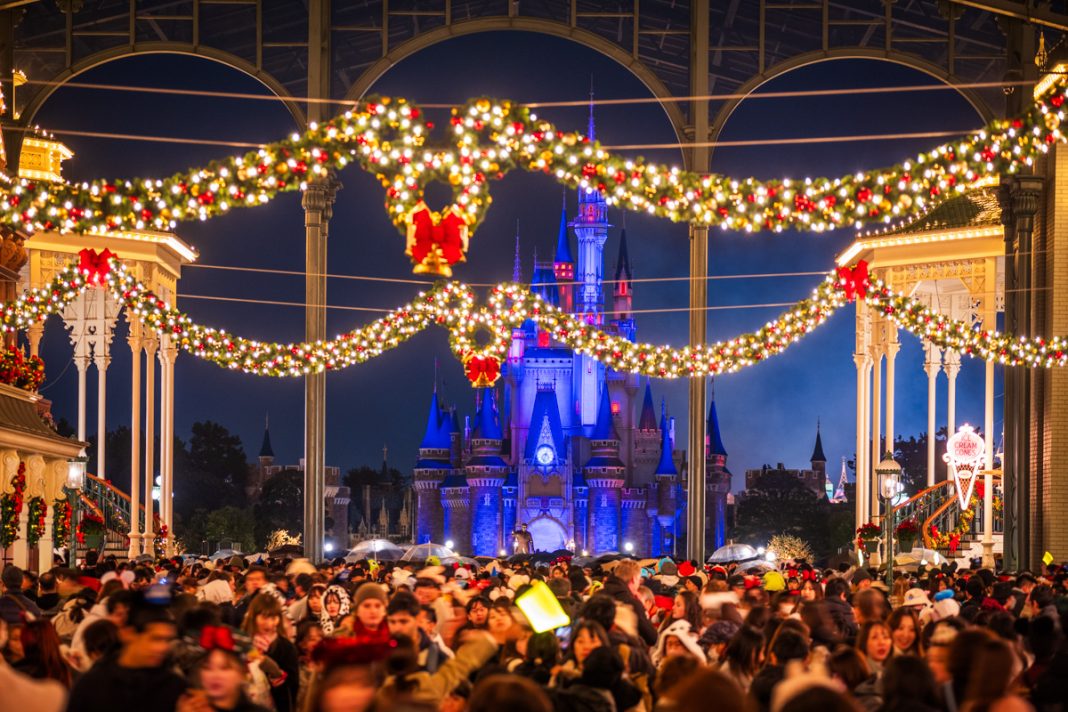






![How to Visit Ain Dubai – the World’s Largest Observation Wheel [Reopened 2025!]](https://pulseprotravel.com/wp-content/uploads/2025/01/Dubai-Travel-Planner-Ain-Dubai-Depositphotos-324x160.jpg)


![How to Visit Ain Dubai – the World’s Largest Observation Wheel [Reopened 2025!]](https://pulseprotravel.com/wp-content/uploads/2025/01/Dubai-Travel-Planner-Ain-Dubai-Depositphotos-218x150.jpg)
